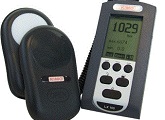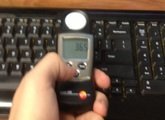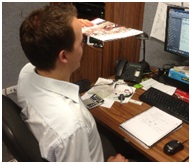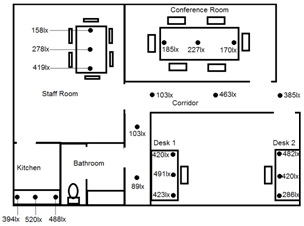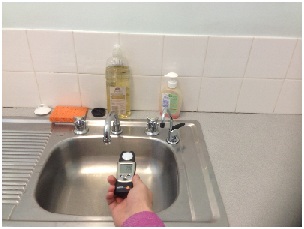May Newsletter 2013 - Light/Lux Meters, Is your office a dull place? Take the test!
May Newsletter 2013 - Light/Lux Meters, Is your office a dull place? Take the test! In this month’s newsletter we run you through Lux Meters, what they do, why they are used as well as showing you how to conduct a OH&S Light study around your workplace. For a bit of fun we took a couple of light meters out and about and tested the light levels at a few locations with some surprising results. See below! We would like to welcome Miriam to the Instrument Choice Team. Miriam started with us
recently and is responsible for updating product information on our website. She has hit the ground running
and recently added the Sper
Scientific AquaShock range of products to our website, the products also have very informative and interesting demo videos on the product pages, stock will be arriving in
next week. If you have any suggestions about information you would like to see on our website or you would
just like to join us in welcoming Miriam to the team you can email her at [email protected]. Until next month... Tyson Grubb |
In workplaces, these tests are performed to make sure that the areas meet OH&S guidelines so that people can work safely. If light levels are too low, people may not be able to operate safely (i.e. missing steps on the stairs, eye strain, headaches). Similarly, if lux levels are too high, glare and reflected light can cause distraction, headaches and can impair vision. Different tasks require different illuminance levels, for example, the light levels in a corridor would not need to be as high as in an area where machinery is being used. Lux meters will typically measure illuminance in Lux and sometimes footcandles, however this term is only really used in the US. One lux is equal to one lumen per square meter and the lumen is a measure of luminous flux. Typical starlight would have a value around 0.001 lux, an overcast day would be around 5000 lux, and a bright Australian summer day would be around 100,000 lux. Basic lux meters, such as the Testo-540 will measure the current lux levels and store a maximum and minimum reading. Another example of a basic but highly functional meter is the LX-1108, with inbuilt settings for different lighting types, giving more accurate readings in different light sources. These types of Lux meters are generally suitable for most OH&S requirements.Higher end units such as the IC-LX200 have a higher accuracy, data logging capabilities and can also be used to perform illuminance cartography which allows you to easily see and analyse how lighting levels vary across a work site or area. |
These guidelines ensure that workers can operate safely without straining their eyes or
having to adopt awkward postures within the workplace. For a bit of fun we will also send some members of
our team out to check levels in random locations around town.
Safe Work Australia also recommends that the following factors should be taken into account when determining if lighting levels are appropriate: • The nature of the work activity being undertaken• Illumination levels from both natural and artificial lighting • The types of hazards present within the workplace • Glare on worker’s computer screens (To determine glare from overhead lights on computer screens, an object such as a book should be placed above the eyes of the worker at eyebrow level. The worker should then establish whether the screen becomes clearer in the presence of overhead glare). • Reflections on work surfaces (This can be determined by having the worker hold an object such as a book above the surface of their desk in order to see if this results in a change to the reflected glare from the screen). Initially we did a walk through of the premises to determine the nature of the work being undertaken, the hazards present, and whether the computer screens in use were affected by glare or reflections. This was established by asking workers questions and having them perform the glare and reflections tests as per the methods described above. These results were then documented and are detailed later in the report.
Figure 1 - My colleague Tim performing
the glare test Using a Testo540 lux meter we then set about conducting our measurements to
determine
the relevant lux levels. The Testo540 was used as it is adapted to the spectral sensitivity of the
eye and it
comes with a calibration certificate from the manufacturer stating it has been
calibrated to ISO:9001 standards at the time of production. To take a measurement the meter was
turned on and held horizontally at arm’s length (so that the Scientist’s body
didn’t affect the lux reading) and held in place until the reading stabilised.
Measurements were taken and noted at 3 points across each working
surface. The measurements were taken at the height
the majority of the work is undertaken within that area which was 760mm (table
height) in our lunch room and conference room, 900mm (working height) in the
kitchen, and 1300mm (eye height) in the offices. The walkthrough and
measurements took approximately 45 minutes to undertake and could be undertaken
in a similar timeframe within your workplace (depending on size). A site plan
showing the location and lux value of each area along with an image of a
measurement being undertaken are shown below:
Figure 3 - Taking a lux measurement in the kitchen The walk through and averaged lux level results are detailed in the following table:
The results from our audit show that our lighting levels are within the recommend range as per the guideline. This means that all staff members should be able to perform their duties safely and without the need to strain their eyes or adopt an awkward posture. Now that the heavy stuff is out the way, we can look at the fun locations around town that staff members from Instrument Choice measured. Some of them were quite surprising. 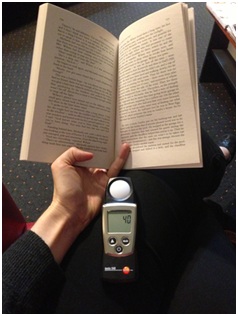 Figure 4 - Physiotherapist’s office ,
quite a low value considering they expect people to read while waiting. 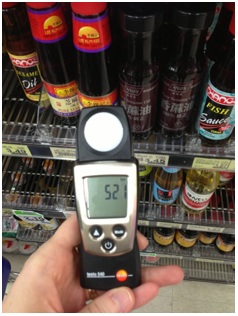 Figure 5 - This supermarket has a lux level that makes finding their specials an easy task for anyone. 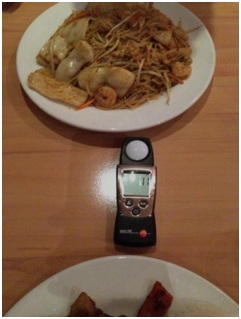 Figure 6 - This local Restaurant had
a very low lux level of 11; ‘mood lighting’ certainly comes to mind here. 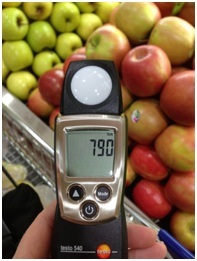 Figure 7 - Fresh fruit shop with a good lux level to show off their fabulous produce. 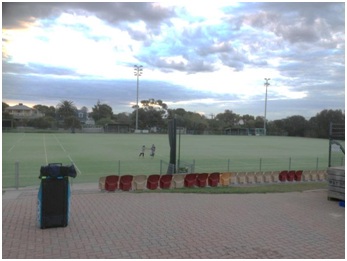 Figure 8 - Hockey Pitch located in
Southern Adelaide produced a level of 3325 lux in the late afternoon, plenty
high enough to see a fast shot at goal. 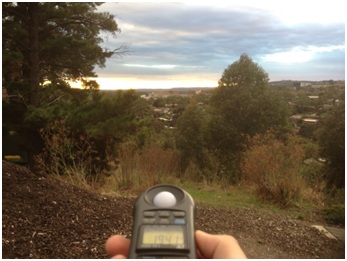 Figure 9 - The sunrise through a gap in the trees overlooking the south. What a perfect view to start the day (measured with LM8000) | ||||||||||||||||||||||||||||||||||||||||||||||||||||||||||||||||||||||||||||

